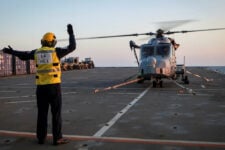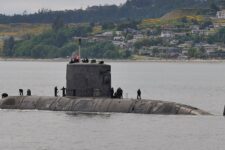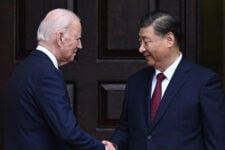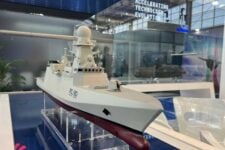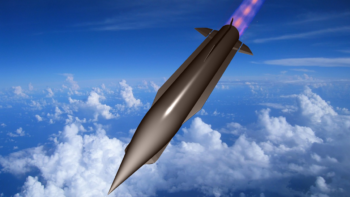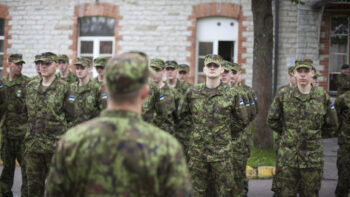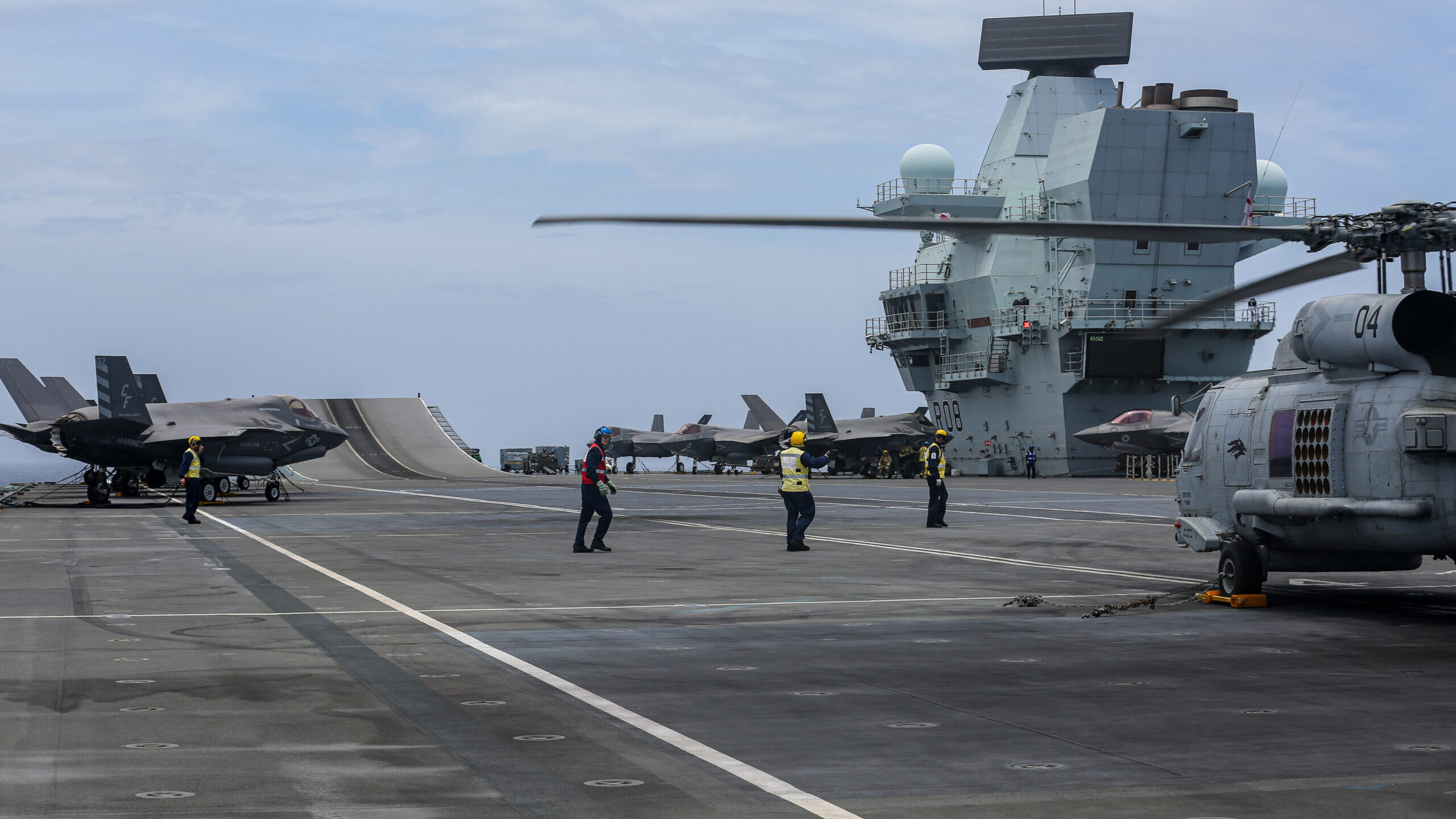
An MH-60R from the “Pit Vipers” of Helicopter Support Maritime 75 conducted a cross deck operation to HMS Queen Elizabeth on 29 July, 2021. (DoD)
DUBLIN — The United Kingdom’s Royal Navy should “export” anti-access/anti-denial (A2/AD) “bubbles” to regional partners in the Indo-Pacific so it can operate effectively there, while maintaining commitments in Europe, a new report urges.
The recommendation, outlined in a report published by the UK-based think tank Royal United Services Institute (RUSI), was delivered to Adm. Ben Key, First Sea Lord of the Royal Navy, and comes ahead of a national defense review “refresh” set for publication by the end of the year.
At issue for London in turning attention to the Indo-Pacific is that it has said the Royal Navy will support the Europe-based NATO Readiness Initiative by committing Carrier Strike Group assets to the project leaving very limited scope or resources for new operations — especially those that involve fleet sustainment at range.
In order to resolve such tension, the RUSI authors recommend a so-called “assured sovereignty” approach be taken in which the Royal Navy lends support to “regional partners” so they could develop anti-A2/AD “bubbles” of their own and in so doing deter Chinese threats.
“If this approach were adopted, it could act as a capstone concept not only for the Indo-Pacific tilt but also for the future evolution of frameworks such as the AUKUS (Australia–UK–US) security partnership,” note the authors, who declined to describe any specific systems the UK might consider transferring.
They suggest that AUKUS should also be matured to include “two additional functions” beyond the multinational partnership’s main focus of delivering nuclear powered attack submarines (SSN) to Australia — namely “reinforcing” Canberra’s ability to restrict freedom of action and building AUKUS “exportable capabilities” so smaller nations can increase deterrence.
“In effect, then, the aim of exporting anti-access bubbles might become the capstone aim around which the partnership evolves,” the report adds. “This is not necessarily the only means by which the UK can contribute to regional balancing dynamics, but it is potentially an approach through which the Royal Navy can deliver the most significant strategic effects.”
There are a series of issues that, when looked at together, combine to make the implementation of newly formed A2/AD bubbles particularly relevant, according to the report. Those include lethal autonomy, scalable manufacturing and “smaller devices” potentially being able to increase lethality — suggesting smaller partner nations in the region, well-guided, could become a greater deterrence to large rivals like China.
The manufacturing of cheap fire and forget weapons made possible by advances in onboard processing power — opening the way forward for autonomous targeting — is identified as a key recent trend that could support the A2/AD bubble strategy.
“[A]gainst certain targets, such as static infrastructure or major warships with large radar crosssections, cheaper capabilities with limited on-board sensor suites may genuinely be capable of autonomous target classification,” states the report. “This both drives down effector costs and lessens the burden of developing a sophisticated kill chain for states that may not have the capacity to do so.”
In remote discussion about the report attended by Breaking Defense on Tuesday, author Sidharth Kaushal referenced “the weaponization of unmanned surface vehicles [used] to good effect against larger maritime vessels” during attacks by Ukraine on Russia’s Sebastopol naval base, Crimea, as recent evidence that underlines the ability of less well-resourced states inflicting damage on a more powerful one.
He also suggested the Russian P-800 Oniks antiship weapon, supplied to Vietnam, as one procurement that shows how “capabilities that were once the preserve of major powers” are increasingly being transferred to smaller nations. Similarly, the development of “smart torpedoes” by the Islamic Revolutionary Guard Corps (IRGC) Navy speaks to the rise of weaponized UUVs and newer improvements in computer processing, according to Kaushal.
“The smaller size of processors combined with smaller packaged sensors available mean that you increasingly see a very diverse set of effectors that can challenge the freedom of surface vessels at sea,” he explained.
Additionally, additive manufacturing “may” also further decrease the cost of cruise missile production, according to Kaushal.
Outside of how these distinct changes in naval warfare can contribute to A2/AD approaches, those involved with the collection of agencies across the UK, dedicated to maritime defense new technology experimentation, could be hugely valuable to helping the “regional partner” plan.
NavyX, a group focused on assessing innovative surface and subsea capabilities for the Royal Navy, would be among those that could assist, as could 1700 Naval Air Squadron, according to Andrew Young, another co-author of the report. Based on a “virtuous circle of experimental learning” future technologies set to be rolled out by the Royal Navy would benefit “those nations we partner with,” added Young.
But it remains unclear what Key will think of the RUSI analysis. In a recent report, he suggested the British Navy was more than willing to expend resources to be in the Pacific in numbers. He told Nikkei Asia that the Navy considers the logistical cost of operating there “absolutely worth paying, for the signals we want to send and the obligation that we feel out here.”
As for AUKUS, he said, “As one of the three nations that are signatories to that pact, I would fully expect us to play a part in shared operations in the region.”

